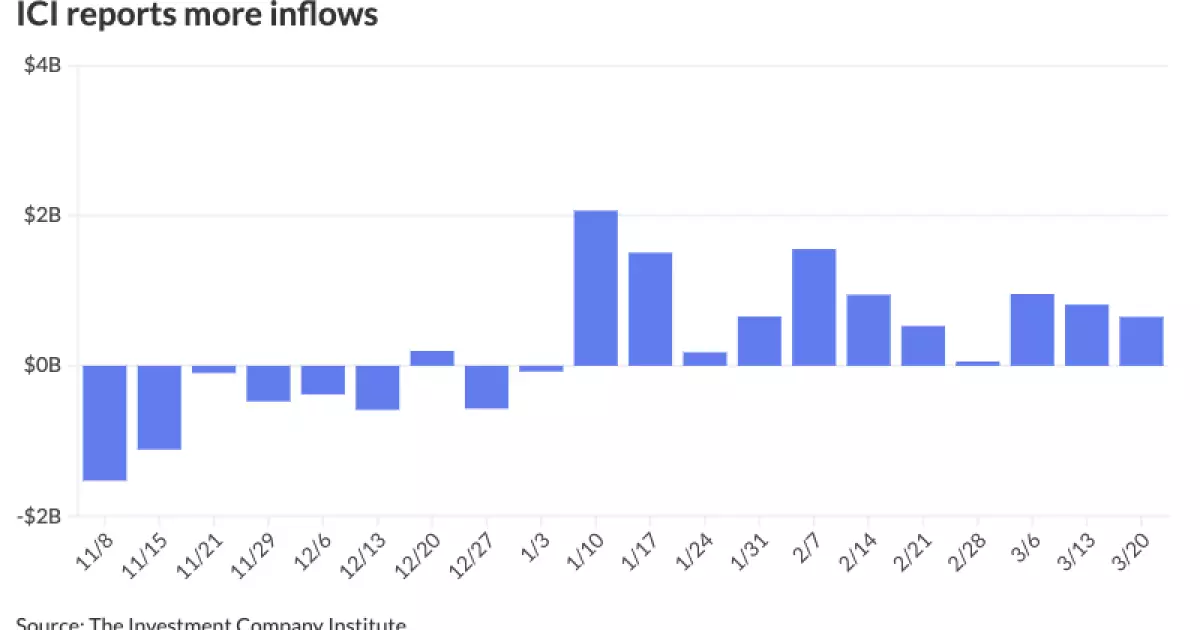The municipal bonds market saw a mixed performance on Wednesday, with noticeable selling pressure on the short end. The primary market lacked significant deals, and investors were still digesting the balances from the previous day’s large new issuances. Despite this, munis managed to hold on quite well, with yields staying within a tight range. It is worth noting that munis underperformed against a stronger U.S. Treasury market, while equities trended upwards. According to Steve Shutz, a portfolio manager and director of tax-exempt fixed income at Brown Advisory, the muni AAA HG curve has remained relatively stable in March, with most spots hovering around year-to-date highs.
J.P. Morgan strategists noted that the muni HG curve has shown significant underperformance this month across various points on the curve compared to the broader fixed income market, following substantial outperformance in February. They also highlighted that absolute yields remain attractive in the context of the trading range over the past three years and long-term projections for lower rates in the current year. The two-year muni-to-Treasury ratio was at 64%, the three-year at 64%, the five-year at 61%, the 10-year at 60%, and the 30-year at 84%. These ratios reflected a slight shift in favor of taxable fixed-income securities, indicating changes in investor preferences and market dynamics.
J.P. Morgan strategists emphasized that the value is most apparent in the longest portion of the tax-exempt market, with ratios of 30-year AA tax-exempts positioned in the middle of the trailing three-year range. They also forecasted underperformance for tax-exempt securities in the less favorable technical environment in March and April. On the other hand, Ben Barber, the director of the Municipal Bonds Department at Franklin Templeton, remained optimistic about tax-exempt market technicals, citing a strong supply and demand outlook. Primary issuance was expected to increase in the market, supported by a high level of investor demand. Recent data indicated a $7.61 billion visible supply and a robust pipeline for new issuances, with a substantial portion dedicated to Build America Bond refundings.
Market dynamics showed an oversubscription of deals across the board, with strong demand persisting in both high-grade and lower-quality primary market issuance. This trend was consistent on a week-over-week basis, indicating strong investor appetite for municipal bonds. Demand continued to outstrip supply, particularly among separately managed account buyers, signaling a healthy market environment. Furthermore, data from the Investment Company Institute revealed consistent inflows into municipal bond mutual funds for the past 11 weeks, reflecting ongoing investor confidence in the market. However, exchange-traded funds witnessed some outflows, indicating varying investor sentiment across different types of investment vehicles.
Various key performance metrics and rate comparisons highlighted the market’s nuances and ongoing trends. The ICE AAA yield curve saw cuts of up to two basis points in specific maturities, reflecting fluctuations in market rates. Treasuries were on a firmer trend, with yields showing changes across different tenors. The municipal bond market’s performance relative to other fixed-income securities underscored the evolving investment landscape and competing asset classes. This intricate interplay of factors influenced investor decisions and shaped market dynamics in the municipal bonds space.
The municipal bonds market’s performance and outlook exhibit a blend of opportunities and challenges. While the market has shown resilience in the face of external pressures, ongoing shifts in investor preferences and market dynamics warrant close monitoring. As investors navigate uncertainties and seek value in the tax-exempt space, a comprehensive understanding of market trends and underlying fundamentals becomes essential for informed decision-making. The critical analysis provided in this article offers valuable insights into the municipal bonds market’s intricacies and sheds light on the factors shaping its trajectory in the near term.

